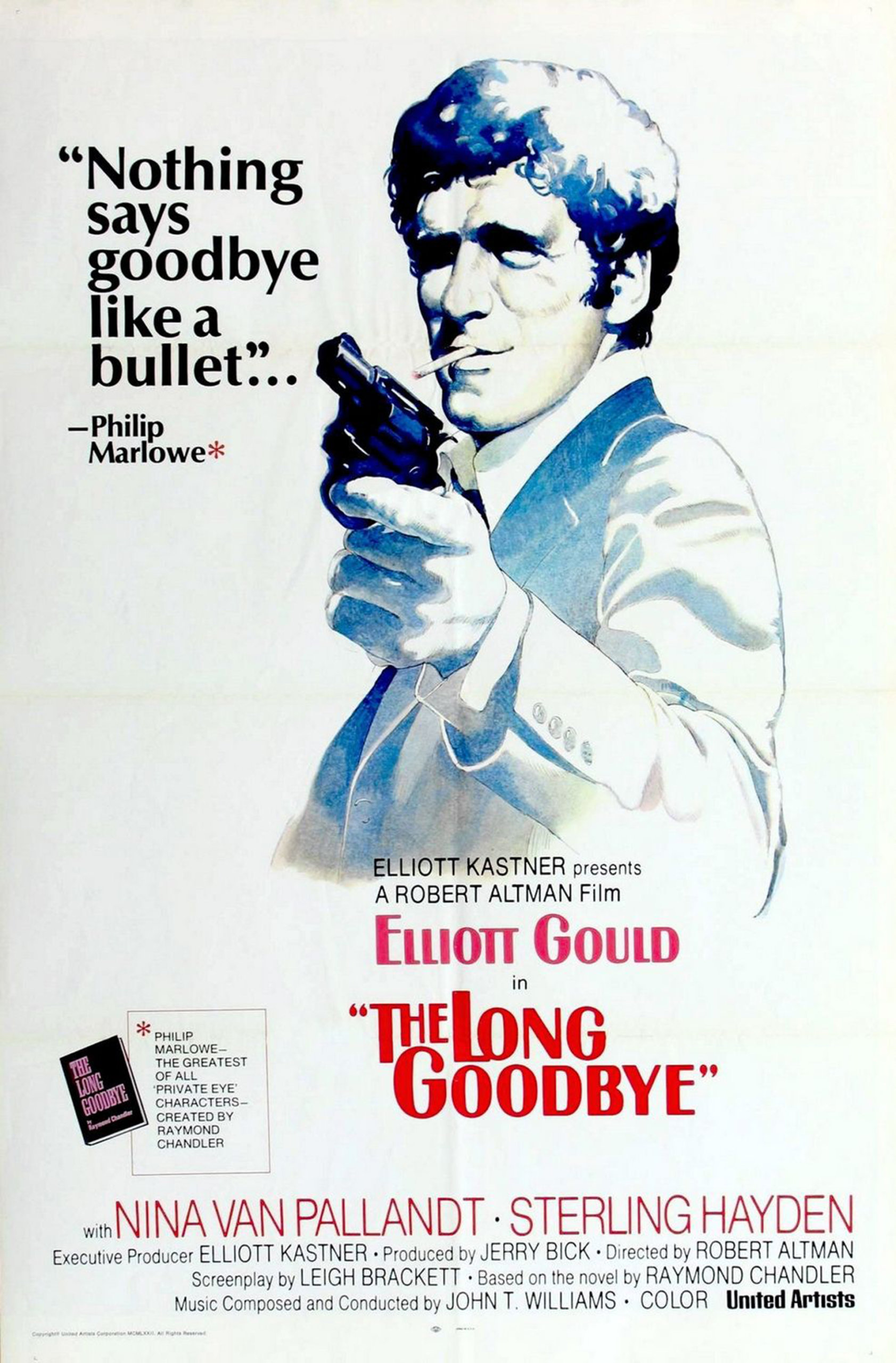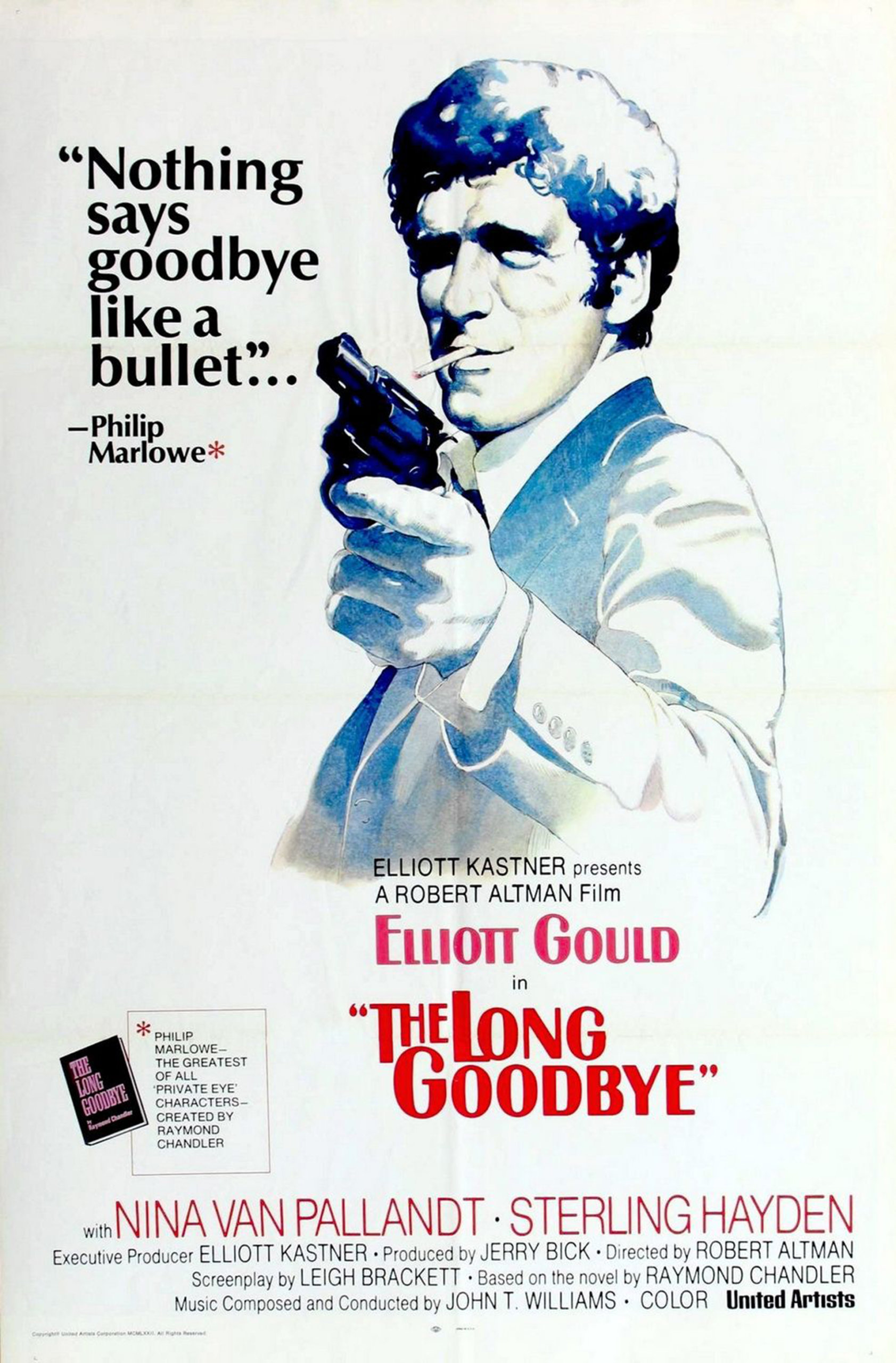Streaming: The Long Goodbye


Robert Altman’s The Long Goodbye (1972) takes an entertaining 1970s look at hard-boiled 1940s detective tales such as The Big Sleep. That earlier film, also based on a Raymond Chandler novel, featured Humphrey Bogart as Philip Marlowe, the iconic and iconoclastic private eye, whose self-imposed mission is to decipher an ambiguous mystery.
The Long Goodbye returns Marlowe in yet another take at this broad theme, but adds a layer of distance by casting Elliott Gould as the detective, who seems to have stepped directly out of the previous film’s hard-wired black and white Los Angeles circa 1940 into the loosey-goosey soft-color world of the 1970s. Dressed throughout in a rumpled dark suit and tie, mumbling bemused comments to himself in a self-absorbed version of the novel’s interior monologues, Gould’s retro character contrasts with the casual beachfront privilege of the plot’s Malibu inhabitants — selfish, malicious, clueless lives spent in gated patio homes, fueled by too much money and liquor and too little regard for anyone else in the world.
Gould’s Marlowe, like Bogart’s earlier incantation, lives and works alone — but this time out of a disorderly modern condo (adjacent to a balcony apartment of topless, drug-addled doxies). He chain-smokes Marlboros and sleeps in his suit (he doesn’t change his clothes over the entire course of the film), and takes care of a recalcitrant cat (in a hilarious introductory sequence, he insists on an ultimately unsuccessful 3 AM grocery run to locate an obscure brand of preferred cat food). Gould, a talented actor and comedian, provides the perfect disheveled tone.
This is not the existentially distressed Marlowe that Chandler created as the hero of his series of 1940s and ’50s novels. However, screenwriter Leigh Brackett (who deserves credit with director Altman for the ultimate success of the film) was co-writer of The Big Sleep 30 years before and knows her character. One of Hollywood’s first female screenwriters, she was initially known for her skill with science fiction scripts and snappy film noir dialogue, but soon made her mark as a canny co-writer with the likes of William Faulkner and Jules Furthman, working with film auteurs such as director Howard Hawks and producer George Lucas.
Her fast-moving script — easy-to-follow, for a detective story — simplifies and streamlines the often labyrinthine plot (this was Chandler’s longest novel, and it shows), shedding characters and combining actions to clarify a reworked resolution. Revisiting the film after reading the book leads to an appreciation of both the difficulty of her task and the success of her solution.
And, that same revisiting reinforces the seminal role of director Robert Altman, a true cinematic innovator and one of the most important filmmakers of the last 50 years. Although this was one of his earlier works (post-M*A*S*H and McCabe and Mrs. Miller, but prior to Nashville, 3 Women, and Gosford Park), it has all the ingredients of an Altman film — improvisation, overlapping dialogue, and a healthy dollop of cynicism, leavened by sly, subversive humor.
Also, as per an Altman film, the cast is filled with off-beat personalities — Marlowe’s elusive friend Terry Lennox (played by baseball pitcher and tell-all memoir Ball One author Jim Bouton), the great Sterling Hayden as alcoholic writer Roger Wade, Nina von Pallandt as his inscrutable wife, the film director Mark Rydell as the shockingly sadistic gangster Marty Valentine, “Laugh-In” TV comedian Henry Gibson as a persistent quack doctor. Bit parts include Ken Swanson’s obsessive gate attendant/movie star impersonator and the dialogue-less appearance of a confused, undressed hoodlum — the young Arnold Schwarzenegger!
At the end of the film, as all the threads come together, Gould’s Marlowe sheds for once his passive, shambling persona and takes unexpected and decisive moral action. Then, to the tune of “Hooray for Hollywood,” he performs a final, celebratory Chaplinesque dance down a rural Mexican road — a true Altman ending that sums up the director’s (and the audience’s) personal satisfaction with this exceptionally well-crafted film.
Streaming is a periodic look at classic films, available on home networks and apps. The film is available on iTunes, Amazon, Vudu, and TubiTV.



